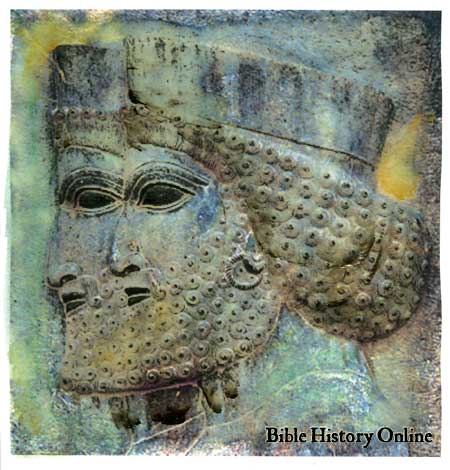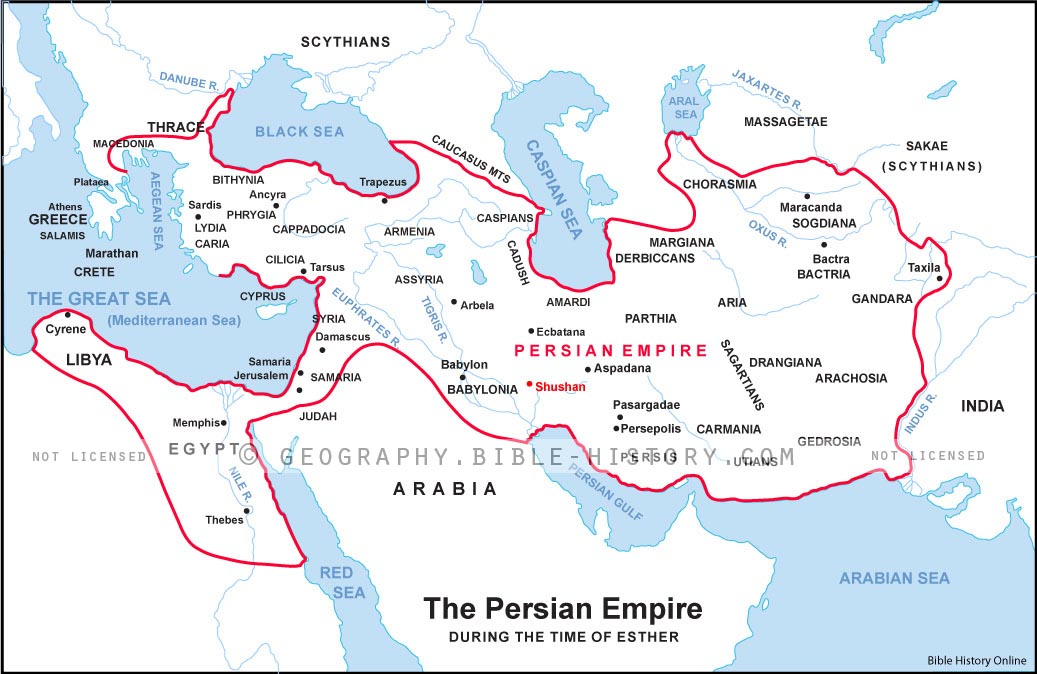Esther 8 Background Information with Maps and Images (Picture Study Bible - Esther) Free Bible Online
Esther 8
Select a Chapter
Select a Book of the Bible
-
Genesis |
Exodus |
Leviticus |
Numbers |
Deuteronomy |
Joshua |
Judges |
Ruth |
1 Samuel |
2 Samuel |
1 Kings |
2 Kings |
1 Chronicles |
2 Chronicles |
Ezra |
Nehemiah |
Esther |
Job |
Psalms |
Proverbs |
Ecclesiastes |
Song of Solomon |
Isaiah |
Jeremiah |
Lamentations |
Ezekiel |
Daniel |
Hosea |
Joel |
Amos |
Obadiah |
Jonah |
Micah |
Nahum |
Habakkuk |
Zephaniah |
Haggai |
Zechariah |
Malachi |
Matthew |
Mark |
Luke |
John |
Acts |
Romans |
1 Corinthians |
2 Corinthians |
Galatians |
Ephesians |
Philippians |
Colossians |
1 Thessalonians |
2 Thessalonians |
1 Timothy |
2 Timothy |
Titus |
Philemon |
Hebrews |
James |
1 Peter |
2 Peter |
1 John |
2 John |
3 John |
Jude |
Revelation |
The Book of Esther
Esther 1:16-18 - And Memucan answered before the king and the princes, Vashti the queen hath not done wrong to the king only, but also to all the princes, and to all the people that [are] in all the provinces of the king Ahasuerus. For [this] deed of the queen shall come abroad unto all women, so that they shall despise their husbands in their eyes, when it shall be reported, The king Ahasuerus commanded Vashti the queen to be brought in before him, but she came not. [Likewise] shall the ladies of Persia and Media say this day unto all the king's princes, which have heard of the deed of the queen. Thus [shall there arise] too much contempt and wrath.
Esther 6:12-14 - And Mordecai came again to the king's gate. But Haman hasted to his house mourning, and having his head covered. And Haman told Zeresh his wife and all his friends every [thing] that had befallen him. Then said his wise men and Zeresh his wife unto him, If Mordecai [be] of the seed of the Jews, before whom thou hast begun to fall, thou shalt not prevail against him, but shalt surely fall before him. And while they [were] yet talking with him, came the king's chamberlains, and hasted to bring Haman unto the banquet that Esther had prepared.
The Old Testament - A Brief Overview
Bible Survey - Esther
Hebrew Name -
Ester
"concealed"
Greek Name -
Aster
(after the Persian word for star)
Author - Mordecai (According to Jewish tradition)
Date - From 521-495 BC Approximately
Theme of Esther - The Jews in Captivity were saved from annihilation by a Jewish
queen
Types and Shadows - In Esther Jesus is the savior of his people





